How to choose a boiler for hot water?

Boiler for water heating provides hot water in the right amount, which is valuable both for residents of apartments where the hot water supply is shut off seasonally, and for homes that do not have a centralized supply of hot water.
Boilers can be:
- accumulation (draws water and heats it),
- flow-through (heats the water that flows through it),
- pouring (in it the water is poured manually, so the model is in demand in villages and cottages).
The energy source for the boiler can be either gas or electricity, but in most cases the electric model is purchased at home. It differs in less power, does not require the installation of gas pipes and the chimney, and also costs less.
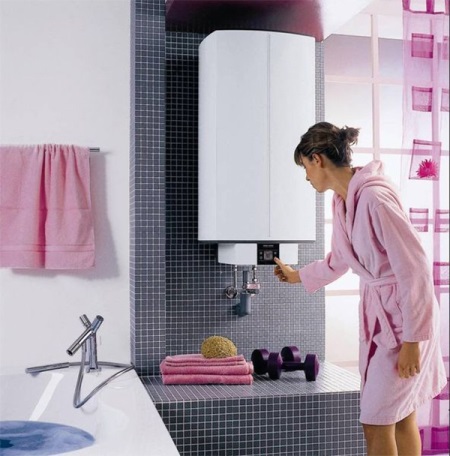
How the boiler works
The design of the boiler is represented by a special tank, which receives cold water. Due to the work of the heating element, the water is heated, rising up. From the top, it is taken up by the pipe, which delivers hot water to the mixer.
The boiler operates with a temperature range of 45-85 degrees.
All boilers have a thermostat that performs the function of temperature control. It is supplemented with a thermometer showing the temperature inside the tank. The thermostat switches the device off when the temperature reaches the set values, and turns the heating element back on as the water cools down.
You can set the water temperature manually or through electronic control.
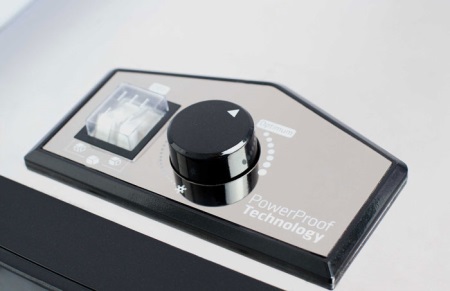
Pros and cons
All the advantages of the boiler will be appreciated by people who are faced with the lack of hot water supply centrally. Such a device makes it possible to always get hot water for your needs. Each type of heater has its own advantages and disadvantages.
Types
Accumulation
Accumulation heater heats a large volume of water and spends less energy than a flow heater.
The minuses of the storage heater are large size and slow heating of water.
In addition, it heats water when it is not required. And the desire to save money, which causes the user to reduce the temperature setting or regularly turn off the unit, can cause rapid breakdown and the appearance of unpleasant odor from the water coming from the unit.
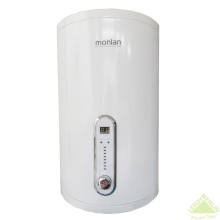

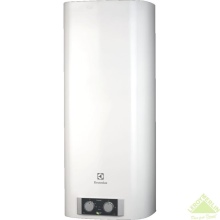
Flow-through
The main advantage of the flow-through boiler is its small size, That makes it more convenient to place the device in the room. Such a boiler can be installed under the sink in the kitchen or above it, as well as in the toilet or inside the wall (concealed version). It heats water quickly, but disadvantage is that it consumes much more electricity than the storage option.
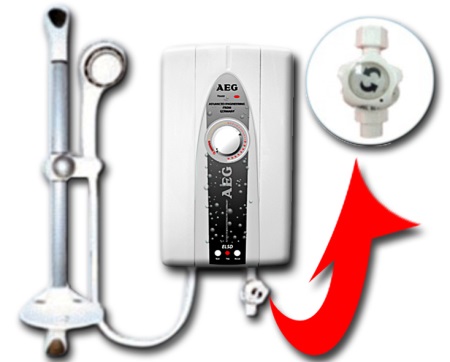
Bulk
The bulk boiler is the best choice for the countryside. Its tank is ergonomic, and the cost of such a device is inexpensive.
The downside of this type of boiler is the risk of overheating the heating element.
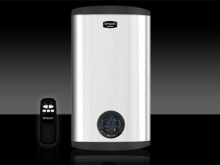
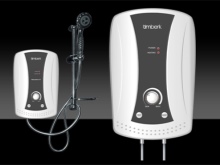

The more expensive the device, the more additional options and advantages it has. For example, expensive boilers are available with express heating and have frost protection. They can also be equipped with a digital indicator that informs the user of the next heating time.
Product shape and tank volume
Most often purchased boilers with a cylindrical shape, which have several advantages at once:
- compact size,
- Long maintain water temperature due to the fact that hot and cold water are in contact inside the vessel with a maximum area.
There are heaters-slims. - They are elongated and slimmer in shape. Due to the reduced cross-sectional area of such a boiler at the output gives more hot water. In addition, such a device takes less space, but the slim boiler costs more than the usual cylindrical.

You can also buy a rectangular water heater, which is easier to fit into the interior in small rooms. Such a boiler can even be hidden in a cabinet in the kitchen. The cost of such boilers is also high.
If there is very little space, you have to buy a boiler horizontal shape, which is mounted under the sink, on a shelf or even under the ceiling. However, if you save space, your energy costs will increase, because the yield of hot water from such a heater is quite low.
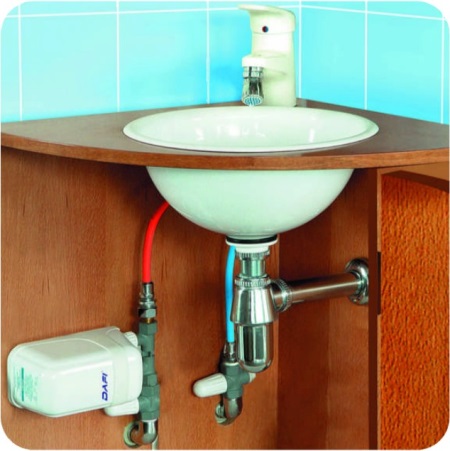
Also, when buying, you should ask about the volume of the heater, considering the intended purpose of the device.
Determining the volume of water that your family needs on a daily basis, you can choose a heater of the right volume (it can be from 5 to 400 liters):
- For 1-2 people, a device with a volume of up to 50 liters is enough,
- for 3-5 people - the volume of 50-100 liters.
Usually a heater with a volume of 5-15 liters is installed in the kitchen, and a device with a tank of 30-100 liters - in the bathroom. Boilers with a large volume are used in the hot water supply at home.
Body material
The quality of the material directly affects the longevity of the device. The models of boilers that are purchased most often have an enameled inside coating. Such water heaters are inexpensive, but they are damaged due to high temperatures faster.
If the tank is made of stainless steel, then such a boiler is more durable and resistant to corrosion, but because of the thin walls it is more sensitive to changes in pressure in the water supply.
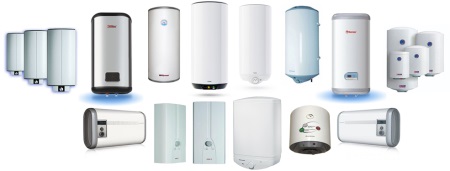
Tanks in the most expensive boilers are coated inside titanium. They last a long time, are less susceptible to corrosion, but have vulnerable places (welding spots).
Thermal insulation
Modern water heaters can be equipped with thermal insulation of the tank, thanks to which the heated water retains its temperature longer. The presence of such thermal insulation will reduce energy waste and prolong the life of the system, which turns on and off the device.
The most common type of thermal insulation is polyurethane. Even with its 3-centimeter layer daily heat loss of the device will be reduced to 25 degrees, and if a layer of insulation will be 7-8 inches, the daily heat loss will not exceed 5 degrees.
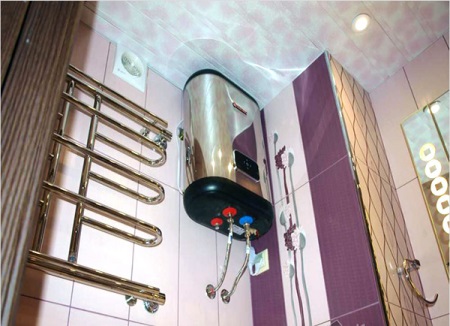
Safety
In order to avoid problems in the operation of the boiler, it is important to observe the following conditions for the safety of its use:
- Never plug the appliance into the mains if there is no water inside;
- Any manipulation (for example, draining water) should be performed only after disconnecting the device from the mains and shutting off the water;
- you should take care of good wiring, which will withstand the load, as well as grounding. It is good if the boiler will be connected to the network through a RCD;
- It is important that the boiler has the ability to drain the water;
- If the pressure in the water supply choose a model that can withstand 9 bar.
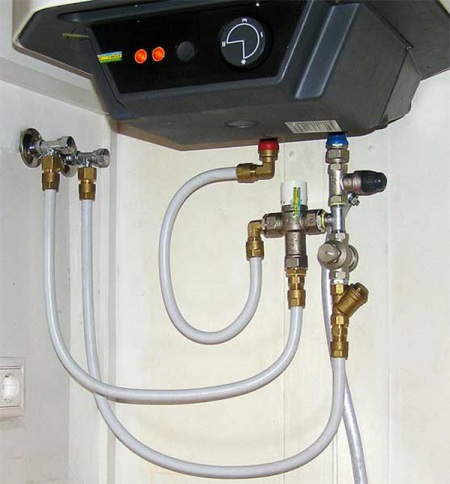
Corrosion and scale
Any boiler has a problem of scale formation and destruction from corrosion, especially if the water that enters the device has a high hardness, and the inner surface of the boiler you purchased is enameled.
To guarantee the protection of the water heater from scale, manufacturers add special anodes (magnesium rods) to the device. Their main action is to dissolve salt deposits on the heating element. During operation, it is important to regularly clean the boiler and check the condition of this anode, replacing it with a new one if necessary.
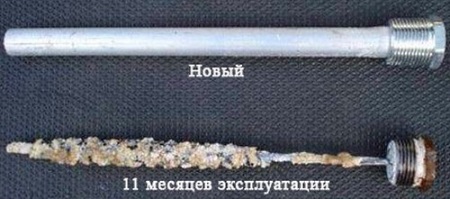
Heating element power
The heating element in an electric boiler can be represented by two types:
- wet,
- dry.
The wet type is also called immersion, because it is placed directly in the water (it looks similar to a boiling pot).
The disadvantages of this type are frequent breakdowns, tendency to overheat, damage and corrosion.
The plus of the wet heating element is a low cost.
Dry type The heating element is protected from water by a glass or ceramic tube. It is more resistant to corrosion, durable and reliable, but its cost is much higher than the wet one.
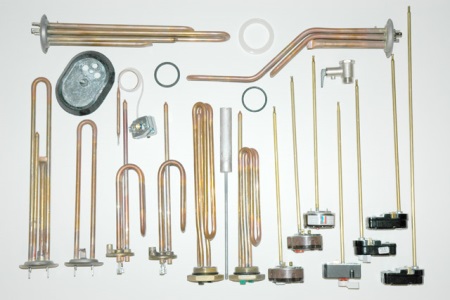
The power of the device primarily depends on how quickly the water will be heated.
A more powerful device will bring water of the desired volume to a given temperature faster. Most models have a capacity of 1.5 kW, but some manufacturers have devices with a capacity of 1.4 or 2 kW in their range.
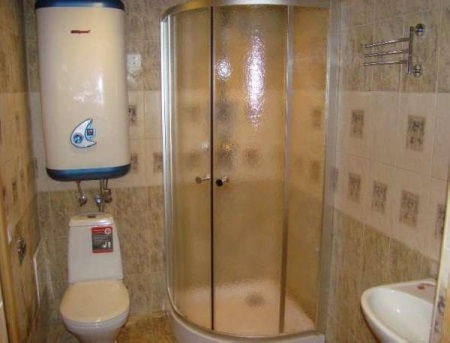
How to install?
Before proceeding with the installation, make sure that the boiler will fit in the space planned for it, all the pipes are easily accessible, and the tools are gathered at hand. Try to imagine the installation process, so that the general scheme will help you in the work.
Boiler according to the method of installation can be:
- wall-mounted,
- floor.
The floor model is most often represented by boilers of large volume, and small devices are often mounted on the wall. We will focus on the installation of wall-mounted heaters, as they are more common.
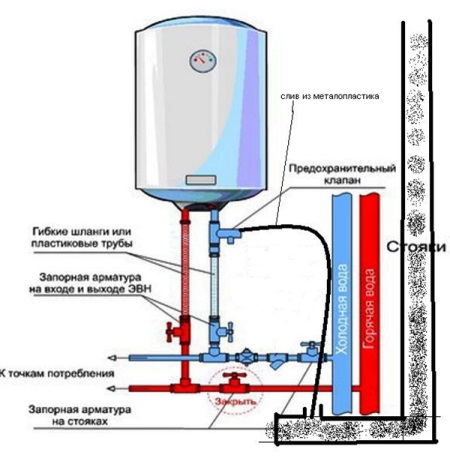
Sequence of actions:
- Shut off the water.
- Fix the boiler on the wall. Here you can not do without a partner, who will help first mark the location of the device, and then and hang the device.
- From the boiler will depart flexible pipes - one of them will be a pipe, bringing cold water to the device, and the second will withdraw heated water. At the inlet pipe is to install a special valve for the ability to shut off the water that enters the boiler. This valve is useful when you are going to clean the device or turn it off for a while, draining the water.
- After making sure that the unit is securely mounted on the wall, each pipe is connected with one end to the heater (do it not too tight), and the other end to the water supply.
- To verify proper installation, open the water supply valve and make sure there are no leaks.
The equipment can be plugged in when it is completely filled with cold water.





We bought a 50l boiler for a family of 30. It turned out not enough, we will buy 100 - better more than less. Our water is often cut off((.